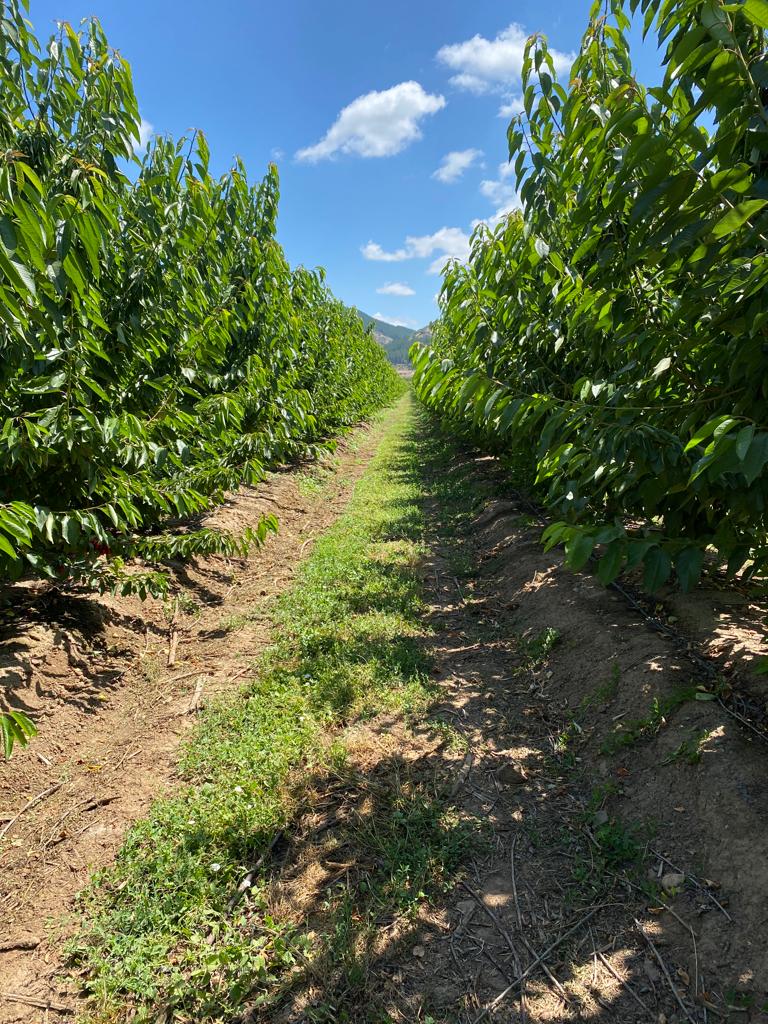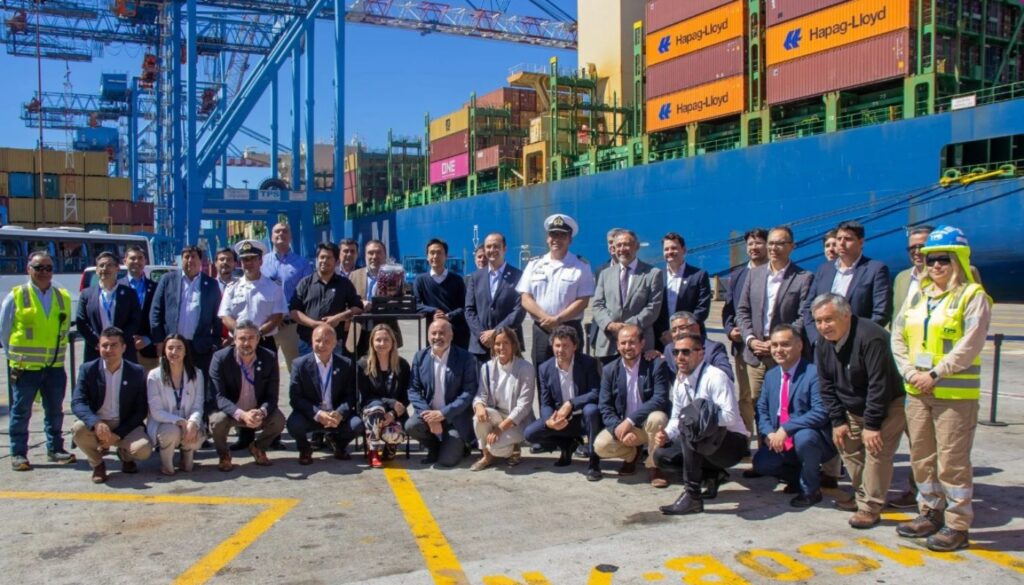In this interview, the post-harvest consultant and co-founder of Trío Kimün commented on the tremendous advances in achieving a fruit resistant to transport, the challenges to extend its durability and the technologies that can make transport possible in close to 50 days, considering even more distant markets for our country.
Please tell us about the evolution of the cherry industry, considering that our target markets are very far away. What is the role of post-harvest research and development and where should it go?
Chile has this tremendous challenge that perhaps no other cherry producing area has. In the southern hemisphere, Argentina perhaps faces the same challenge as opposed to the northern hemisphere, which generally has such a short post-harvest period that it is not as developed as we have it.
This industry has done something that seemed incredible. When you talk to a European and tell them that we make cherries last 30 or 40 days, they tell you that it is impossible and we have achieved it as a result of combining the resources of the industry, the learning of the industry, of universities, of technicians, in which not only from the post-harvest side, after having the fruit in a packed box, but also from the orchard we have been working on a product to achieve this challenge that 20 years ago seemed impossible.
We have clearly reached 30 or 35 days without any major problems, but it is true that today we are faced with tremendous challenges, which is to try to extend at least ten more days, to be able to reach markets further away from 45 to 50 days and not have major problems. That is where the industry is trying to work with technology, but since we already have prior knowledge working with orchard management, which leads us to have a product with more energy to be able to withstand an even longer post-harvest.

In your presentation you talked about Premium quality. Which specific varieties currently grown in Chile meet these conditions? In addition, with this added value of an extended post-harvest shelf life.
In general, the range of premium quality varieties that we have meet this requirement. The problem is that suddenly, due to a specific management problem, a problem with saving an input, a bad application, a bad choice of irrigation or different factors, you do not achieve this potential.
I would say that all varieties, including the entire range of new varieties that are coming in, meet at least this premium quality at the time of harvest. However, we have to evaluate how this premium quality is maintained over time, because we have this tremendous challenge of 35, 40 or 50 days.
Santina is a very good variety that holds up quite well. Another is Lapins. Bing was also an excellent variety, but it has other production problems and that is why it was not chosen to continue with the replanting, but it is a very good variety from a post-harvest point of view. Regina is a tremendous variety, but it has a small weakness that makes it difficult for us to prolong storage for longer. It is a variety that behaves quite well up to 35 days. After that, it suddenly begins to falter, but this variety has tremendous pre-harvest production potential and good quality, which we have to work on to be able to prolong its post-harvest life.
I would remove Sweet Heart from the varieties we currently have, which was a late variety, but we were overcome by mechanical damage and in reality the variety will always have that problem. It is a variety that in general should gradually disappear and the rest, I believe, will continue to be strengthened and in this evaluation of new varieties, looking for the best possible replacements that clearly have to cover and be better than those we already have.
You talk a lot about mechanical damage, and you just mentioned it. How can we continue to improve and perfect it? Because without a doubt, in the presentations we have had, the cherry industry has done a very good job. But without a doubt, those challenges are increasing every season.
Mechanical damage is two defects that are actually the same defect, it is a bruise. The fruit receives a blow and in response to that blow there is a break in the structure of the cherry. Over time and very similar to what happens with a green apple, it turns brown and that is why we notice it. In the cherry we do not see that brown color, but usually because there is a break in the tissue, the tissue is depressed and obviously it gives it an undesirable aesthetic appearance.
Therefore, this species itself is sensitive to damage, so what you can do is have a fruit that is as resistant as possible to that damage and then handle it with the best treatment conditions, to minimize the impact, it is both together. To have a more resistant fruit, what you have to do is work the entire part of the orchard, to have a firm fruit with a high sugar content early.
It is embodied in a lot of handling that I am not going to detail, but finally if we manage to obtain a firm fruit with a high sugar content early, we will have a more resistant fruit. Why sugar? Sugar itself does not give it better resistance, but usually solid-soluble is very correlated with what is dry matter, it is a parallel. So if I have high brick material, I have high dry material and high dry matter implies better wall structure in a fruit, therefore if I manage to obtain a good high brick and I mean 17 bricks early, that means red colors, it means that I have a better, more resistant product and then to make a good treatment of the fruit at harvest and in post-harvest, which is what we have been working on. The post-harvest part is already with enough modifications to make the treatment less aggressive and to have the least impact we can on the development of this damage.

Undoubtedly, Chile is known for producing excellent quality cherries, but extending the post-harvest period by 30-45 days is very relevant. What happened to the technologies associated with controlled atmospheres? What innovations or management can be made to improve even more?
I have to go back a little in history. 25 or 27 years ago, when very few cherries were produced and it was unthinkable to reach China, there was, in addition to temperature, which is clearly the main technology we are using today, to be able to keep this species in storage, by reducing temperatures we also reduce respiratory rates and thus prolong storage, that is one of the great tools that has always been used.
But to make the leap from a trip to the United States that was 15 to 20 days and to reach markets as far away as Asia, an additional technology was introduced, which are modified atmosphere bags. This bag contributes something to everything that is the metabolic part, but in reality the great gain we had with it is that it produces an increase in the humidity content of the air in the system, it increases the relative humidity in the packaging and that meant that the pedicels arrived in good shape. Why, if nobody eats pedicels, but unfortunately for the one who is buying, the consumer finds the color striking. So they buy cherries but with green pedicels.
So, that technology came in handy, at least with that we were able to make the trip and that is how we have been working until now. Clearly being able to introduce atmospheres with more controlled gases, because the modified one is a controlled form but where I ultimately do not control anything, that is why it is modified. In the controlled atmosphere I can control the concentrations of gases inside a container, where the fruit is traveling. It is something that is being evaluated, but it has certain obstacles and that is that this controlled atmosphere would last as long as it is in that container.
So we have a previous period when there are packing centres, where there is no controlled atmosphere and then when it reaches the market, the fruit in general must be broken by the entire registration system, there is personnel from the health department who check that the fruit arrives without problems, which breaks the container and if we depend on a quick sale we would not have a problem. The modified atmosphere bag that accompanies you for a long time is already a major advantage.
The other thing is that we have to evaluate what contributions the controlled atmosphere is making to us, which will undoubtedly exist, but we are evaluating and we have to compensate it with the other technologies used and we have been working on that for two or three seasons.








